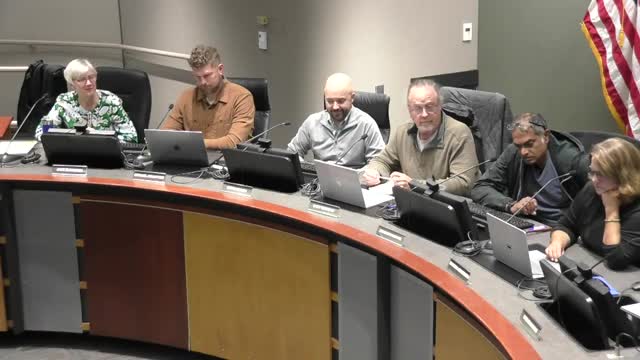Water Testing Proposal Sparks Debate Over Groundwater Safety
November 18, 2024 | Lawrence, Douglas County, Kansas
This article was created by AI summarizing key points discussed. AI makes mistakes, so for full details and context, please refer to the video of the full meeting. Please report any errors so we can fix them. Report an error »

In a recent government meeting, officials discussed critical amendments regarding water testing protocols, particularly focusing on groundwater contamination concerns. The dialogue centered around the necessity of testing for zinc levels in areas where construction occurs near groundwater.
One official expressed significant apprehension about groundwater, highlighting its rapid flow and potential for downstream contamination, contrasting it with soil studies that indicated limited migration. This concern prompted a proposal for a text amendment that would require water testing when construction piers are within four feet of the groundwater level.
The motion, which aimed to defer the current text amendment, sought to clarify the language surrounding testing requirements. Officials debated the existing language, which specifies testing at the highest groundwater level, and whether it adequately addresses the risks posed by construction activities.
The discussion revealed confusion among members regarding the specifics of the proposed changes and the implications of the existing regulations. Ultimately, the officials agreed to revisit the text amendment, with a focus on ensuring that the language clearly mandates testing in proximity to groundwater, thereby enhancing safety measures against potential contamination.
As the meeting concluded, the officials recognized the importance of establishing a clear and effective framework for water testing, underscoring the need for ongoing dialogue and collaboration to protect public health and the environment.
One official expressed significant apprehension about groundwater, highlighting its rapid flow and potential for downstream contamination, contrasting it with soil studies that indicated limited migration. This concern prompted a proposal for a text amendment that would require water testing when construction piers are within four feet of the groundwater level.
The motion, which aimed to defer the current text amendment, sought to clarify the language surrounding testing requirements. Officials debated the existing language, which specifies testing at the highest groundwater level, and whether it adequately addresses the risks posed by construction activities.
The discussion revealed confusion among members regarding the specifics of the proposed changes and the implications of the existing regulations. Ultimately, the officials agreed to revisit the text amendment, with a focus on ensuring that the language clearly mandates testing in proximity to groundwater, thereby enhancing safety measures against potential contamination.
As the meeting concluded, the officials recognized the importance of establishing a clear and effective framework for water testing, underscoring the need for ongoing dialogue and collaboration to protect public health and the environment.
View full meeting
This article is based on a recent meeting—watch the full video and explore the complete transcript for deeper insights into the discussion.
View full meeting
